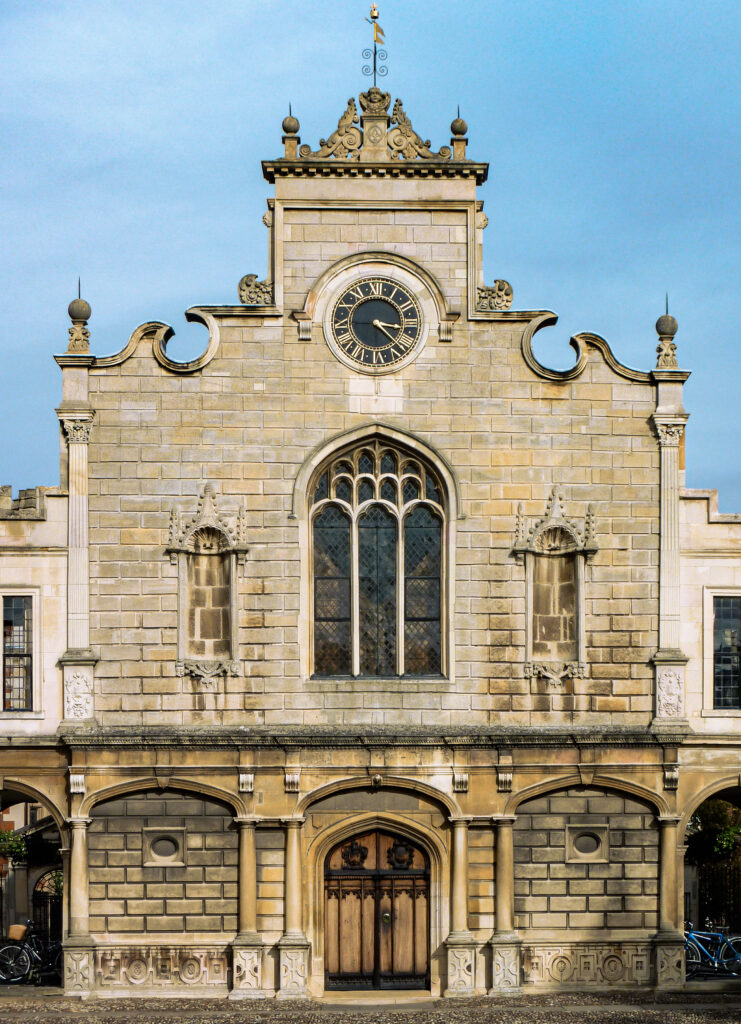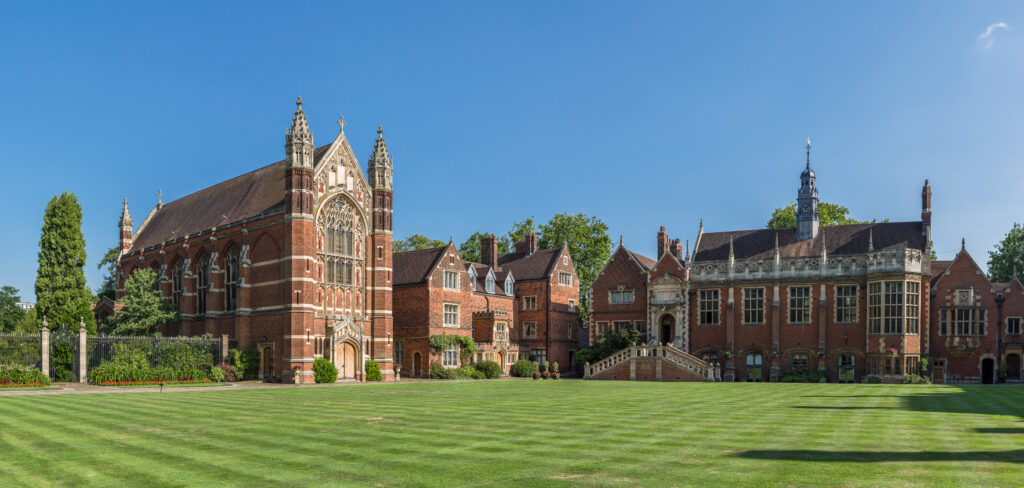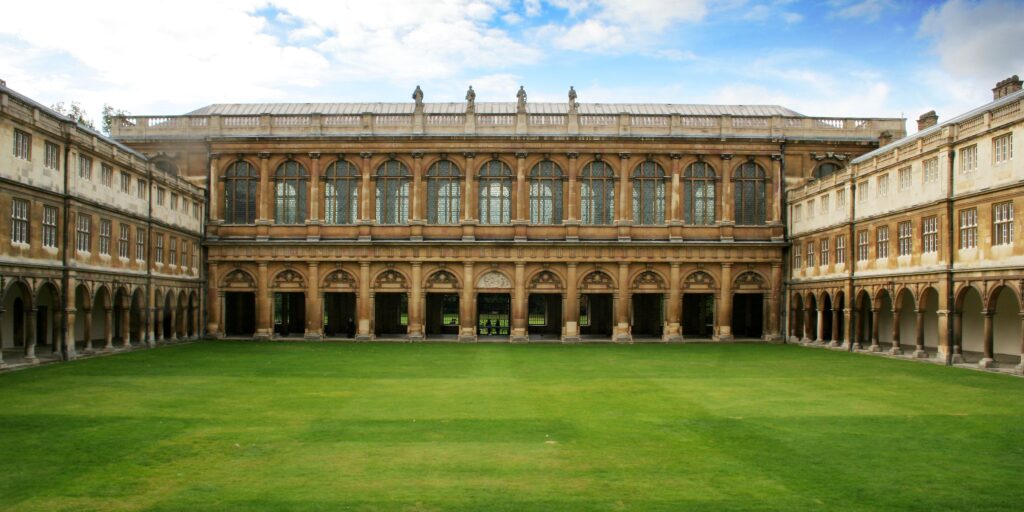Studying Medicine on Scholarship in Europe

Introduction
Studying medicine is a noble and rewarding pursuit that comes with its own set of challenges, particularly concerning the financial burden associated with medical education.
For international students, Europe offers a plethora of opportunities to study medicine, often at a lower cost compared to other regions, and with access to world-class educational institutions.
Scholarships further enhance these opportunities, making it feasible for aspiring doctors to achieve their dreams without incurring overwhelming debt.
In this guide, we will explore the comprehensive process of studying medicine with a scholarship in Europe, covering essential topics such as admission requirements, the structure of medical education, necessary exams, and post-graduation pathways. With the right information and preparation, you can embark on your journey to becoming a doctor in one of the most vibrant and diverse educational environments in the world.
Why Study Medicine on Scholarship in Europe?
Studying medicine in Europe on scholarship offers numerous advantages that significantly enhance your educational experience and career prospects.
High-Quality Education
European medical schools are renowned for their rigorous academic standards and comprehensive training programs. Many institutions are recognized globally for their contributions to medical research and healthcare innovations. By studying in Europe, you’ll gain access to top-tier faculty, advanced research facilities, and a diverse learning environment.
Affordable Tuition Fees
Compared to medical schools in the United States and other regions, tuition fees for medical programs in Europe can be considerably lower. Countries like Germany, France, and the Netherlands offer relatively affordable tuition, especially for EU and EEA students. Scholarships can further alleviate financial burdens, making it more accessible for international students.
Diverse Cultural Experience
Studying in Europe provides a unique opportunity to immerse yourself in different cultures and languages. This multicultural environment not only enriches your educational experience but also prepares you for a globalized medical practice. Understanding diverse patient backgrounds is essential in today’s healthcare landscape.
Wide Range of Scholarships
These scholarships can cover tuition fees, living expenses, and travel costs, making studying medicine more affordable. Scholarships like Erasmus+ and DAAD are examples of funding opportunities available for medical students.
Pathways to Practice in Multiple Countries
Graduating from a recognized European medical school can open doors to practice medicine across the EU. Many countries have streamlined processes for foreign-trained doctors, allowing for greater mobility within the region. This flexibility can be advantageous if you wish to specialize or work in a different country post-graduation.
European medical schools often incorporate a mix of theoretical knowledge and practical training. Many programs include clinical rotations in hospitals, enabling students to apply their learning in real-world settings. Additionally, there are numerous opportunities for research and internships, which can enhance your medical education and resume.
By choosing to study medicine in Europe on scholarship, you’re not only investing in your education but also positioning yourself for a successful and fulfilling career in healthcare.
The medical education system in Europe varies by country, but it generally consists of a structured approach that combines theoretical knowledge with practical training. Understanding this system is crucial for international students aspiring to study medicine in Europe. Here’s an overview of how medical education is typically organized:
- Duration of Medical Programs :Medical programs in Europe usually last between six to seven years, depending on the country and specific institution.
Bachelor’s Degree: In some countries, students may first complete a bachelor’s degree in a related field before entering medical school.
Medical Degree: Upon completion of the medical program, graduates receive a medical degree (MD or equivalent), which qualifies them to practice medicine.
- Curriculum Structure
The curriculum for medical students is typically divided into two main phases:
Pre-Clinical Phase: This initial phase usually lasts for the first two to three years and focuses on basic medical sciences, including anatomy, physiology, biochemistry, and pharmacology. Students also begin to develop foundational clinical skills during this period.
Clinical Phase: The latter part of the program involves hands-on clinical training, which may last three to four years. Students rotate through various medical specialties in hospitals and clinics, gaining practical experience in diagnosing and treating patients.
- Teaching Methods
European medical schools employ various teaching methods to enhance learning, including:
Lectures: Traditional classroom instruction where professors present medical concepts and theories.
Practical Sessions: Hands-on training in laboratories and simulation centers to practice clinical skills and procedures.
Clinical Rotations: Real-world experience in healthcare settings, allowing students to apply their knowledge and interact with patients under supervision.
- Assessment and Examinations
Students are assessed through a combination of:
Written Exams: These may include multiple-choice questions, short answers, and essays covering theoretical knowledge.
Practical Assessments: Evaluating clinical skills through OSCEs (Objective Structured Clinical Examinations) and practical exams in a clinical setting.
Continuous Assessment: Involving quizzes, group projects, and presentations throughout the course.
- Accreditation and Recognition
It is essential for international students to choose medical schools that are accredited and recognized by relevant bodies. Graduating from an accredited institution is crucial for obtaining a medical license and practicing medicine in Europe and other countries. - Language of Instruction
Many medical programs in Europe are offered in English, especially in countries that attract a significant number of international students. However, some schools may conduct courses in the local language. Prospective students should verify the language of instruction when considering their options.
Understanding the structure of the medical education system in Europe will help you navigate the various programs and make informed decisions about your studies.

Step 1:
Pre-Medical Requirements
Before applying to medical schools in Europe, prospective students must meet specific pre-medical requirements. These prerequisites ensure that candidates have the necessary educational foundation and skills to succeed in medical education.
Educational Prerequisites
Most European medical schools require students to have completed secondary education or equivalent qualifications. This typically includes:
High School Diploma:
Students should possess a recognized secondary school diploma, which demonstrates completion of secondary education.
Science Subjects:
Strong backgrounds in science subjects such as biology, chemistry, and physics are essential. Many programs require specific grades in these subjects to ensure students have the requisite knowledge for medical studies.
Recommended High School Subjects
To strengthen their application, aspiring medical students should focus on the following subjects during high school:
Biology:
Understanding human biology and the principles of life sciences is fundamental for medical education.
Chemistry:
Knowledge of organic and inorganic chemistry is crucial, as it underpins many aspects of medical science.
Mathematics:
A solid grasp of mathematics aids in understanding statistics and calculations relevant to medical research and practice.
Physics:
Basic physics concepts are important, especially in understanding medical imaging and other technological applications in medicine.
Entrance Exams Required
Many medical schools in Europe require candidates to take entrance exams as part of the admission process. These exams assess the candidate’s knowledge in relevant subjects and their aptitude for medical studies. Common entrance exams include:
BMAT (Biomedical Admissions Test):
Used by some UK medical schools to assess candidates’ scientific knowledge and critical thinking abilities.
UKCAT (UK Clinical Aptitude Test):
Another test used in the UK, focusing on cognitive skills, professional behaviors, and situational judgment.
Entrance Exams for Specific Countries:
Countries like Germany and Italy may have their own entrance exams or assessments, such as the Test for Medical Studies (TMS) in Germany.
Prospective students should thoroughly research the specific entrance exams required by the medical schools they are interested in and prepare accordingly.
Step 2:
Applying to Medical School in Europe
Applying to medical school in Europe involves several key steps and considerations, especially for international students. Understanding the application process, deadlines, and required documents will help ensure a smooth admission experience.
Application Process for International Students
Research Medical Schools:
Start by researching various medical schools across Europe to identify programs that align with your interests, language proficiency, and scholarship opportunities. Consider factors such as the school’s reputation, curriculum, and location.
Check Admission Requirements:
Each medical school has specific admission criteria. Verify the prerequisites, including educational qualifications, entrance exams, language requirements, and application deadlines.
Prepare for Entrance Exams:
If required, register for and prepare for any necessary entrance exams. Allocate adequate time for study to ensure you perform well.
Complete the Application Form:
Most universities have an online application portal. Fill out the application form carefully, providing all requested information and ensuring accuracy.
Submit Supporting Documents:
Prepare and submit the required documents, which typically include:
High school transcripts and diplomas.
Proof of language proficiency (if applicable).
Entrance exam scores (if required).
Letters of recommendation.
A personal statement or motivation letter outlining your interest in medicine and why you want to study in that particular school.
Interview Process: Some medical schools may require an interview as part of the admission process. Prepare for this by practicing common interview questions and articulating your motivation for pursuing a medical career.
Key Deadlines and Timelines
Application Deadlines:
Application deadlines vary by school and country, so it’s crucial to be aware of these dates. Many programs have deadlines in late winter or early spring for entry in the following academic year.
Entrance Exam Dates:
Be mindful of the dates for entrance exams, as they may have specific schedule that could impact your application timeline.
Notification of Admission:
After submitting your application, most schools will notify candidates of their admission status within a few months. Ensure to check the school’s website for specific timelines.
Documents Required for Admission
The following documents are commonly required for admission to medical schools in Europe:
Academic Transcripts:
Official transcripts from your high school indicating your grades and courses taken.
Proof of Language Proficiency:
For non-native speakers, schools may require proof of English proficiency (e.g., IELTS, TOEFL) or proficiency in the local language.
Entrance Exam Results:
If applicable, include your scores from required entrance exams.
Letters of Recommendation:
Typically, two or three letters from teachers or professionals who can attest to your suitability for medical studies.
Personal Statement:
A well-written essay detailing your motivation for studying medicine and why you have chosen that particular school.
Understanding and adhering to the application process and requirements is essential for international students seeking to study medicine in Europe. Proper preparation and timely submission of documents will significantly enhance your chances of acceptance into your desired program.
Step 3:
Medical School Structure in Europe
The structure of medical education in Europe is designed to equip students with the knowledge and skills necessary to become competent healthcare professionals. Understanding this structure will help prospective students navigate their medical studies effectively.
Overview of the Medical Curriculum
The medical curriculum in European schools typically consists of two main phases: the pre-clinical phase and the clinical phase.
Pre-Clinical Phase:
This initial phase generally lasts for the first two to three years of the program. During this time, students focus on foundational subjects such as:
Basic Medical Sciences:
Subjects like anatomy, physiology, biochemistry, pharmacology, and microbiology form the core of this phase, helping students understand the human body and disease processes.
Clinical Skills:
Students begin developing clinical skills through practical training and simulations, preparing them for patient interactions in the clinical phase.
Clinical Phase:
This phase lasts for the remaining three to four years of the program and includes:
Clinical Rotations:
Students participate in rotations through various medical specialties (e.g., surgery, pediatrics, internal medicine), where they gain hands-on experience in diagnosing and treating patients.
Integration of Theory and Practice: The curriculum integrates clinical practice with theoretical knowledge, allowing students to apply their learning in real-world settings.
Clinical Rotations and Practical Training
Clinical rotations are a critical component of medical education, as they provide students with practical experience in hospitals and healthcare settings. Key aspects include:
Diverse Specialties:
Students rotate through various specialties, which helps them explore different areas of medicine and identify their interests for future specialization.
Mentorship:
During rotations, students work under the supervision of experienced healthcare professionals, gaining valuable mentorship and guidance.
Patient Interaction:
Practical training allows students to interact with patients, conduct physical examinations, and develop their clinical skills in a real-world context.

Duration and Cost of Medical Education
The total duration of medical education in Europe typically ranges from six to seven years, culminating in a medical degree (MD or equivalent). Costs associated with medical education vary widely depending on the country and institution. Key points to consider include:
Tuition Fees:
Tuition costs can vary significantly between countries. For example, some countries offer low or no tuition fees for EU students, while non-EU students may face higher fees.
Living Expenses:
In addition to tuition, students should budget for living expenses, including accommodation, food, transportation, and health insurance, which can vary by city and country.
Scholarships and Financial Aid:
Many universities offer scholarships specifically for international students, which can significantly reduce the financial burden of studying medicine in Europe.
Understanding the structure of medical education, including the curriculum and practical training components, is essential for prospective students as they prepare for their studies and future careers in medicine.
Step 4:
Exams, Licensing, and Certifications
Once you complete your medical education in Europe, there are essential exams and licensing requirements to ensure you are qualified to practice medicine. Understanding these processes is crucial for aspiring doctors. Here’s an overview of what to expect:
Required Licensing Exams in Europe
To practice medicine in Europe, graduates must pass specific licensing exams. These exams vary by country and can include:
Professional Licensing Exams:
Many countries require graduates to pass a national licensing exam to obtain a medical license. For instance, in the UK, graduates must pass the Professional and Linguistic Assessments Board (PLAB) test to practice medicine.
European Examinations:
Some countries may have specific European-level assessments, like the European Qualification Examination (EQE), which evaluates the competencies of medical graduates from different countries.
Local Exams:
Certain countries may have their own unique examinations or assessments that students must pass before they can register as a licensed physician.
Certification Bodies and Exams After Graduation
Upon successful completion of medical education and licensing exams, graduates may need to obtain certification from relevant medical bodies. These certifications often depend on the specialty or area of practice. Key points include:
Specialty Boards:
After completing residency training, doctors must often pass exams conducted by specialty boards (e.g., pediatrics, surgery) to become board-certified in their chosen field.
Continuous Professional Development:
Many countries require doctors to participate in ongoing education and training to maintain their medical licenses and certifications. This can involve attending workshops, seminars, and additional examinations throughout their careers.
Importance of Licensing and Certification
Obtaining the necessary licenses and certifications is vital for several reasons:
Legal Requirement:
Practicing medicine without the appropriate licenses can lead to legal repercussions.
Patient Safety:
Licensing exams assess the knowledge and skills of medical graduates, ensuring that only qualified individuals are permitted to provide healthcare services, which ultimately protects patient safety.
Professional Credibility:
Being licensed and certified enhances a physician’s credibility and reputation within the medical community and among patients.
Understanding the licensing and certification process is essential for international students pursuing a medical career in Europe. Thorough preparation for required exams and compliance with local regulations will help ensure a successful transition from medical school to professional practice.
Step 5:
Post-Graduation Pathways
After completing medical school in Europe, graduates must navigate various pathways to begin their medical careers. This phase typically includes internships, residency programs, and further training options.
Internship and Residency Programs in Europe
Internship:
In many European countries, new medical graduates are required to complete a one-year internship (also known as a foundation year or clinical clerkship) before entering a residency program. This internship provides practical experience across various medical fields, allowing graduates to apply their knowledge in real-world settings.
Residency Programs:
After the internship, graduates can apply for residency programs in their chosen specialties. Key aspects include:
Duration:
Residency programs typically last between three to six years, depending on the specialty (e.g., general practice, surgery, pediatrics).
Specialty Training:
Residents receive in-depth training in their chosen fields, gaining hands-on experience under the supervision of experienced physicians.
Application Process:
Applying for residency programs often involves submitting applications to specific hospitals or training centers, where candidates may need to undergo interviews and assessments.
Steps to Achieve Full Medical Licensure
Complete Required Training:
Successfully finishing both the internship and residency is essential for achieving full licensure. Graduates must meet all requirements set forth by the respective medical board or regulatory authority.
Pass Specialty Examinations:
Many countries require graduates to pass additional specialty board examinations to practice independently in their chosen field. These exams assess the knowledge and competencies needed for that specialty.
Obtain Medical License:
Upon completing all training and examinations, graduates can apply for a full medical license, allowing them to practice medicine independently in their chosen country.

Specialization and Further Training Options
After completing residency, doctors may choose to specialize further or pursue additional training through fellowships. Key considerations include:
Fellowships:
These programs offer advanced training in subspecialties (e.g., cardiology, neurology) and typically last one to three years. Fellowships enhance expertise and open up more specialized career opportunities.
Continued Education:
Many medical professionals engage in lifelong learning through workshops, conferences, and additional courses to stay updated with the latest advancements in medicine and enhance their skills.
Understanding the post-graduation pathways is essential for medical graduates in Europe, as it helps them transition smoothly from education to professional practice. Each step, from internships to specialization, plays a vital role in shaping their careers as competent healthcare providers.
Studying medicine in Europe is a significant investment, and understanding the associated costs is crucial for international students. The financial aspects include tuition fees, living expenses, and potential scholarships. Here’s a breakdown of the costs involved in pursuing a medical degree in Europe.
Tuition Fees for Medical Schools in Europe
Tuition fees for medical programs can vary widely across different countries and institutions.
EU vs. Non-EU Students: Tuition fees for EU students are often lower than those for non-EU students. Some countries, such as Germany and Norway, offer tuition-free education for EU students, while non-EU students may face higher fees.
Average Tuition Costs:
In countries like Germany and Sweden, tuition fees may range from €0 to €3,000 per year for EU students and €7,000 to €20,000 for non-EU students.
In the UK, tuition fees can be significantly higher, ranging from £9,250 to £38,000 per year, depending on the university and program.
Countries like Italy and Spain may charge tuition fees between €1,000 and €5,000 per year for EU students and higher for international students.
Institutional Variations: It’s essential to research individual medical schools, as fees can differ significantly even within the same country.
Cost of Living, Scholarships, and Financial Aid Options
Living Expenses:
In addition to tuition, students should budget for living expenses, which can include:
Accommodation:
Rent varies by city; for example, living in major cities like London or Paris will generally be more expensive than in smaller towns.
Food and Groceries:
Monthly grocery bills can range from €200 to €400, depending on the country and individual preferences
Transportation:
Students should consider costs for public transportation, which can vary widely by city.
Health Insurance:
Most countries require students to have health insurance, which may be included in tuition or purchased separately.
Scholarships and Financial Aid:
Many universities in Europe offer scholarships specifically for international students, which can significantly reduce the overall cost of studying medicine. Some notable options include:
Erasmus+ Program:
Offers scholarships for students studying in Europe, providing financial assistance for tuition and living costs.
University-Specific Scholarships:
Many medical schools have their scholarship programs based on academic merit, financial need, or specific fields of study. It’s essential to check with individual universities for available scholarships.
Work Opportunities:
Many countries allow international students to work part-time while studying, which can help offset living expenses. However, students should ensure they understand the regulations surrounding work permits and restrictions.
Understanding the costs of studying medicine in Europe and exploring available scholarships and financial aid options is vital for prospective international students. Proper financial planning can alleviate some of the financial burdens associated with medical education.
Visa Requirements for International Medical Students
Navigating the visa process is a critical step for international students wishing to study medicine in Europe. Each country has specific requirements, and understanding these can help streamline the transition from home country to study destination. Here’s a guide to the visa requirements for aspiring medical students.
Student Visa Process for Europe
Determine Visa Type:
Depending on the country where you plan to study, you will likely need a student visa.
Application Requirements:
The requirements for a student visa may vary, but generally, you will need to provide:
Proof of Admission:
An official acceptance letter from the medical school confirming your enrollment.
Financial Evidence:
Documentation demonstrating your ability to cover tuition fees and living expenses during your studies. This can include bank statements, scholarship offers, or sponsorship letters.
Health Insurance:
Proof of valid health insurance coverage, which is mandatory in most European countries.
Passport and Photos:
A valid passport and passport-sized photos that meet the specific visa requirements.
Application Process:
The process typically involves,
Filling Out the Visa Application:
Complete the student visa application form for the specific country.
Submitting Documents:
Gather and submit the required documentation to the relevant embassy or consulate.
Visa Interview:
Some countries may require an interview as part of the visa application process.
Processing Time:
Visa processing times can vary significantly by country, so it’s advisable to apply well in advance of your intended start date. Allow several weeks or even months for the visa application process.
Work Permit and Post-Graduation Work Opportunities
Work While Studying:
Many European countries allow international students to work part-time during their studies, usually up to 20 hours per week during the semester and full-time during breaks. This can help students manage living expenses while gaining valuable work experience.
Post-Graduation Work Visa:
After completing your medical degree, you may want to remain in the country to work. Many European countries offer a post-study work visa for international graduates, which allows them to stay and seek employment in their field for a specific period (usually between 6 months to 2 years).
Application Requirements:
This process typically involves providing proof of your degree, a job offer or evidence of job hunting, and financial stability.
Transition to Full Work Visa:
Once you secure a job, you may need to apply for a full work visa or residence permit, which will allow you to work long-term in your chosen country.
Understanding Residency Rules: Each country has its own residency rules for foreign medical graduates. It’s essential to research the specific requirements for the country where you intend to practice, including licensing and any additional exams needed.
Understanding visa requirements and processes is crucial for international students aiming to study medicine in Europe. Proper preparation and adherence to guidelines will help ensure a smooth transition into your medical education and future career.
High Demand for Healthcare Professionals:
Europe generally faces a strong demand for qualified medical professionals. Factors contributing to this demand include.
Job Market for Medical Graduates
Aging Population:
Many European countries are experiencing an increase in elderly populations, leading to a greater need for healthcare services.
Shortage of Medical Professionals
Certain regions, especially rural areas, often struggle to attract and retain healthcare providers, creating job opportunities for new graduates.
Diverse Career Opportunities:
Graduates can pursue a wide range of career paths in various medical fields, including:
General Practice:
Many doctors choose to work in primary care, providing comprehensive health services to patients.
Specialized Fields:
After completing residency and possibly fellowships, graduates can specialize in fields such as cardiology, surgery, pediatrics, or psychiatry.
International Opportunities: For those who are open to relocation, many European countries actively recruit foreign-trained doctors to fill gaps in their healthcare systems. This opens up opportunities for international graduates to practice medicine in different settings.
Expected Salaries and Employment Opportunities
Salary Expectations:
Salaries for doctors in Europe can vary significantly based on factors such as:
Country and Region:
Generally, Western European countries (e.g., Germany, the UK, and France) offer higher salaries compared to Eastern European countries.
Specialty:
Specialists tend to earn more than general practitioners. For example, a general practitioner might earn between €60,000 to €90,000 annually, while specialists can earn between €80,000 to €150,000 or more, depending on their field and experience.
Job Stability:
The medical profession is often considered stable and resilient, even during economic downturns. Healthcare jobs tend to have lower unemployment rates compared to other fields, providing a degree of job security.
Continued Professional Development:
Many employers encourage ongoing education and training, which can lead to advancements in career and salary growth. Doctors who engage in continuous professional development often have better opportunities for promotions and specialized roles.
Factors Influencing Career Success
Networking and Professional Associations: Joining medical associations and networking with professionals in the field can enhance career prospects. Many countries have organizations that support young doctors through mentorship, training, and job placement services.
Language Skills:
Proficiency in the local language can significantly improve job prospects, especially in countries where patient interaction is crucial. Many medical schools in Europe also offer language support for international students.
Work-Life Balance:
Different countries in Europe have varying approaches to work-life balance for healthcare professionals. Countries like Denmark and Sweden are known for promoting a healthy work-life balance, which is an important consideration for many medical graduates.
Understanding the career prospects and job market dynamics for doctors in Europe can help international students make informed choices as they embark on their medical careers. With the right preparation and adaptability, they can find fulfilling opportunities in the healthcare sector.

Conclusion
Studying medicine in Europe with a scholarship presents a unique opportunity for international students to pursue their dream of becoming doctors while benefiting from high-quality education and diverse cultural experiences. Throughout this guide, we have explored essential aspects of the journey, from the initial decision to study medicine in Europe to the career prospects that await graduates.
Key Takeaways for Aspiring Doctors
Understand the Requirements:
It’s crucial to be aware of the medical school requirements, including educational prerequisites, entrance exams, and the application process. Each country has its own set of criteria, and thorough research can ease the admission process.
Plan Financially:
The costs associated with studying medicine can be significant. International students should consider tuition fees, living expenses, and potential scholarships to develop a realistic financial plan.
Visa Regulations:
Navigating the visa process is essential for studying in Europe. Ensure that you understand the student visa requirements and the steps needed to transition to work after graduation.
Post-Graduation Pathways:
Familiarize yourself with the post-graduation pathways available, including internship and residency opportunities, licensing requirements, and the options for further specialization.
Career Opportunities:
The medical field in Europe offers diverse career paths, with a strong demand for healthcare professionals. By staying informed about the job market and networking within the industry, graduates can enhance their career prospects.
By preparing thoroughly and understanding the complexities of studying medicine in Europe, aspiring doctors can take meaningful steps toward achieving their goals. Europe’s rich educational landscape, combined with opportunities for scholarships and financial aid, makes it an attractive destination for international students pursuing a medical degree.
Resources for More Information
To ensure a smooth transition into studying medicine in Europe, it’s essential for prospective students to access reliable information and resources. Below are some valuable links and resources that can provide further guidance on the various aspects of medical education, scholarships, and the application process.
Official University Websites:
Many universities offer comprehensive information about their medical programs, admission requirements, and scholarships. Researching specific institutions can provide insights tailored to your interests.
Example: University of Oxford Medicine
Scholarship Portals:
Organizations such as the World Federation for Medical Education (WFME) provide resources and information on medical education standards and programs globally.
Visa Information:
Websites like Scholarship Portal and Study in Europe list scholarships available for international students across various European countries.
The Erasmus+ program provides information on scholarship opportunities for students studying in Europe.
Medical School Admission Information:
The European Union’s official website offers detailed information on visa requirements for non-EU students.
Individual country embassies also provide specific visa application guidelines, processes, and requirements.
Professional Organizations:
Joining professional organizations, such as the European Medical Students’ Association (EMSA), can provide networking opportunities, resources, and information about internships and job prospects.
Online Forums and Communities:
Platforms like The Student Room and various Facebook groups dedicated to international students in Europe can offer peer support, advice, and shared experiences.
Government Resources:
Many European countries have government websites dedicated to education that provide valuable information on studying abroad, such as funding options, student rights, and living in that country.
Study in Europe Portal
Study in Europe This official European Union portal provides comprehensive information on studying in various European countries, including details on tuition fees, scholarships, and living costs.
Scholarship Portal
Scholarship Portal A database of scholarships available across Europe, specifically for international students looking to study medicine or other fields.
Erasmus+ Program
Erasmus+ Information on scholarships and funding opportunities for students interested in exchange programs or full-degree studies within Europe.
World Federation for Medical Education (WFME)
WFME A global organization providing resources on medical education standards, accreditation, and programs worldwide.
Official University Websites
Examples;
University of Oxford Medicine The official page for Oxford’s medicine program.
Charita Universitatsmedizin Berlin A renowned medical university in Germany, with programs and scholarship information.
European Medical Students Association (EMSA)
EMSA Europe A European organization offering networking opportunities, events, and resources for medical students across Europe.
For example, regional scholarship Adisurc covers for “University of Campania Luigi Vanvitelli” and “University of Naples Federico II“. Keep in mind, for these scholarships you have to apply separately from university of Europe and their dates may be different from those of IMAT and pre-enrollment.

